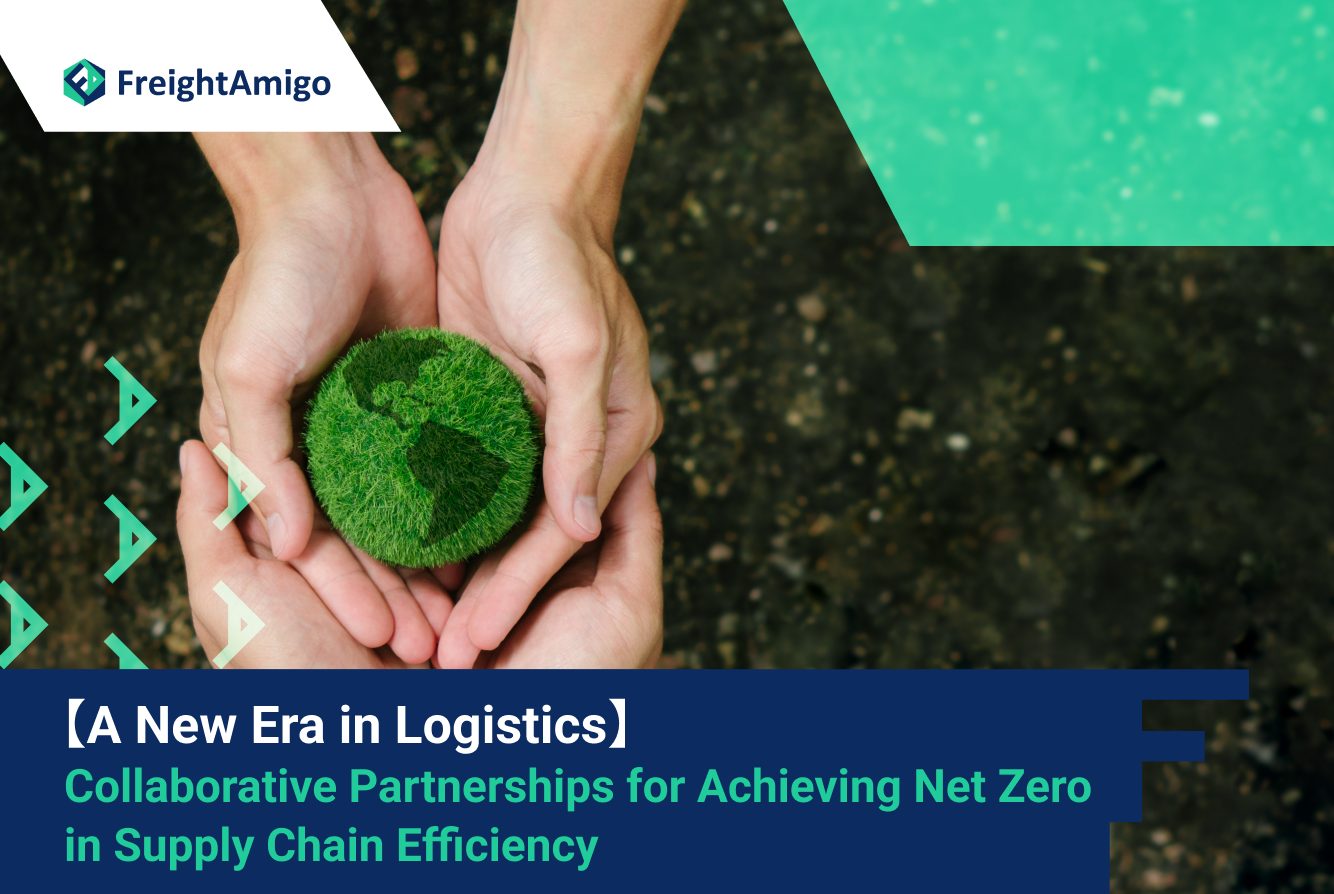Author Name: Tiffany Lee – Marketing Analyst at FreightAmigo
The supply chain industry is undergoing a seismic shift, pivoting toward sustainable practices. The race to reach Net Zero is on, and corporations are seeking innovative solutions to reduce their carbon footprint, enhance efficiency, and promote sustainable growth. The key to this transition lies in leveraging collaborative partnerships, harnessing the power of digital platforms, and embracing transparency and traceability.
Want To Compare The Best Express, Air Freight, Sea Freight, Rail Freight & Trucking Rates So As To Have Better Control On Cost?
The Pillars of a Sustainable Supply Chain
The foundation of a sustainable and efficient supply chain rests on six fundamental pillars:
- Intelligent Design and Risk Management
- Forecasting and Integrated Business Planning
- Comprehensive Sourcing Analysis and Supplier Collaboration
- Touchless and Agile Order Fulfilment
- Supply Chain as a Service
- Control Tower for End-to-End Performance Management
These pillars help create an intelligent network that balances resilience, performance, and sustainability. They enable organizations to segment markets, differentiate services, optimize inventories, and monitor risks, all within an eco-friendly framework.
“A sustainable supply chain is not only a business imperative but also a necessity for preserving our planet.”
Boosting Sustainability Performance: The Threefold Approach
The journey towards a sustainable supply chain can be navigated through three distinct routes:
- Transforming Network Design: This involves minimizing transportation distance and risks, optimizing the use of assets, and reducing the environmental footprint. It can be achieved by adopting green and shared warehousing facilities and choosing the most suitable transportation mode.
- Revamping Last-Mile Delivery: This includes implementing multimodal delivery solutions in urban areas, partnering with sustainable last-mile delivery providers, and facilitating efficient reverse logistics for end-of-life product treatment and refurbishment.
- Enhancing End-to-End Planning and Orchestration: By improving visibility across the supply chain, organizations can optimize resource consumption, reduce waste, and manage stock levels effectively.
Advanced analytics and data sharing are instrumental in this process. They help organizations limit waste and make their operations more sustainable.
The Imperative of Transparency and Traceability
Transparency and traceability are crucial elements in a sustainable supply chain. A report by NielsenIQ revealed that 73% of consumers are willing to pay more for products that offer complete transparency. Customers are keen to understand the origin of products and the impact of their production on the environment.
“Transparency in supply chains is not just a business necessity; it’s a demand from the conscious consumer.”
Corporations need to measure their carbon footprint continuously and make their supply chains traceable. This not only provides proof of sustainability claims but also helps create a more agile and efficient supply chain, reducing waste and resource consumption.
However, implementing a traceability program comes with its own set of challenges, including:
- Tracking back through the raw materials channel and collecting information at each step of the value chain
- Ensuring the authenticity and consistency of data while respecting suppliers’ independence and data protection rights
- Collecting sustainability proofs and making them transparent to customers through an end-to-end data platform
- Reconciling data, even if it comes from poorly managed or non-harmonized databases
Sharing Best Practices for Sustainability
Achieving sustainability requires collaboration and sharing of best practices. Pioneers like Capgemini have set ambitious goals such as becoming carbon neutral by 2025 and achieving Net Zero by 2030. By partnering with such committed organizations, businesses can benefit from their sustainability efforts.
Another important aspect is engaging in dialogues and discussions about sustainability. Initiatives like Capgemini’s Climate Circles bring together business leaders to redefine responsible business practices and share ideas on sustainability transformation.
The Promise of Inclusive, Resilient, and Transparent Supply Chains
Truly sustainable supply chains are inclusive, resilient, and transparent. They are structured to reduce environmental impact, build climate resilience, and support inclusive growth and poverty reduction.
Collaborative initiatives play a pivotal role in achieving these objectives. They help harness the collective insights and lessons from the private sector and stakeholders to drive sustainable change in supply chains.
Increasing the Impact of Supply Chain Collaborations
To maximize the impact of supply chain collaborations, BSR identified four key characteristics:
- Multistakeholder Governance: Collaborations that include relevant business, civil society, and government actors are more likely to generate tangible impact.
- Accountability for All Members: Successful collaborations focus on achieving specific outcomes, and all members are held accountable for their roles.
- Transparent Reporting and Information Sharing: Transparent initiatives inspire trust and contribute to better global data on supply chain sustainability.
- Focus on Impact and Measurable Improvements: Successful collaborations demonstrate how they are driving impact, focusing on tangible improvements rather than just processes and outcomes.
A Call to Action: Driving Impact through Collaborative Partnerships
While collaboration presents the best opportunity to tackle sustainability issues in global supply chains, it is not without challenges. However, by focusing on multistakeholder governance, accountability, transparency, and an impact-focused approach, we can drive progress and make sustainable improvements in supply chains.
In the quest to achieve Net Zero, organizations like FreightAmigo are leading the way with innovative solutions. Their AmiGo Green project offers digitized shipping documents, green freight route quotations, and carbon emission calculators to support companies’ efforts to reduce carbon emissions and save energy.
“Achieving Net Zero is a collective responsibility. Through collaboration and innovation, we can turn this dream into a reality.”
Conclusion
The transition to a sustainable and efficient supply chain is a complex yet rewarding journey. By leveraging the power of collaborative partnerships, embracing transparency, and harnessing innovative solutions, we can move closer to achieving our Net Zero goals. Let’s strive for a greener and more sustainable future, together.
There Are Different Options For Cargo Transportation. If You Want To Choose The Most Convenient And Suitable Solution, It Is Best To Have The Full Support Of Logistics Experts! If You Are Planning To Ship Goods Overseas, Please Go To The FreightAmigo Page For Inquiries.
===
Read More:
【Logistics News】Singapore to Sign Declaration on Green Shipping Corridors
FreightAmigo Won Startup Grand Award In TechChallenge — Digitising Trade Finance
Sailing Schedule: Streamlining Logistics Operations for Efficient Shipments
===
If you have any inquiries on logistics/supply chain, feel free to contact FreightAmigo now:
Chat with us online OR
Phone : +852 28121686
WhatsApp: +852 27467829









































